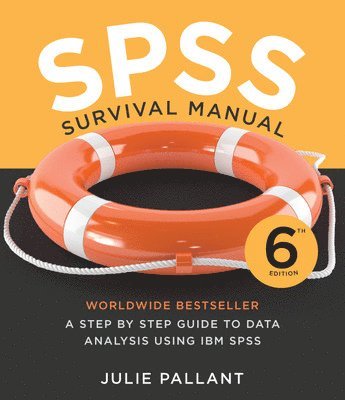
- Format
- Spiral bound
- Språk
- Engelska
- Antal sidor
- 400
- Utgivningsdatum
- 2016-04-16
- Upplaga
- 6
- Förlag
- Open University Press
- Illustrationer
- Black & white illustrations
- Dimensioner
- 260 x 230 x 25 mm
- Vikt
- Antal komponenter
- 1
- Komponenter
- Spiralbindung
- ISBN
- 9780335261543
- 720 g
SPSS Survival Manual
Slutsåld
Kundrecensioner
Fler böcker av Julie Pallant
-
Ebook: SPSS Surival Manual: A Step by Step Guide to Data Analysis using IBM SPSS
Julie Pallant
The SPSS Survival Manual throws a lifeline to students and researchers grappling with this powerful data analysis software.In her bestselling guide, Julie Pallant takes you through the entire research process, helping you choose the right data ana...
-
Creating Images Using AI
Julie Pallant
Creating Images Using AI: A Step-by-Step Guide to Midjourney is an essential resource for professionals and others looking to harness the amazing power of AI-powered image generator programs and to ensure they keep up to date with developments in ...
Övrig information
Julie Pallant has spent many years helping students overcome statistics phobia. She is currently a research coordinator in the Faculty of Medicine, Dentistry and Health Sciences at the University of Melbourne, Australia. Previously she has also worked as an applied statistics lecturer, counselling psychologist, and has taught psychology, statistics and research methods at a number of universities.
Innehållsförteckning
Du kanske gillar
-
Atomic Habits
James Clear
Trade paperback (UK) -
Next Conversation
Jefferson Fisher
Trade paperback (UK) -
Abundance
Ezra Klein, Derek Thompson
Trade Paperback -
The Creative Act
Rick Rubin
Inbunden -
Careless People
Sarah Wynn-Williams
Inbunden
